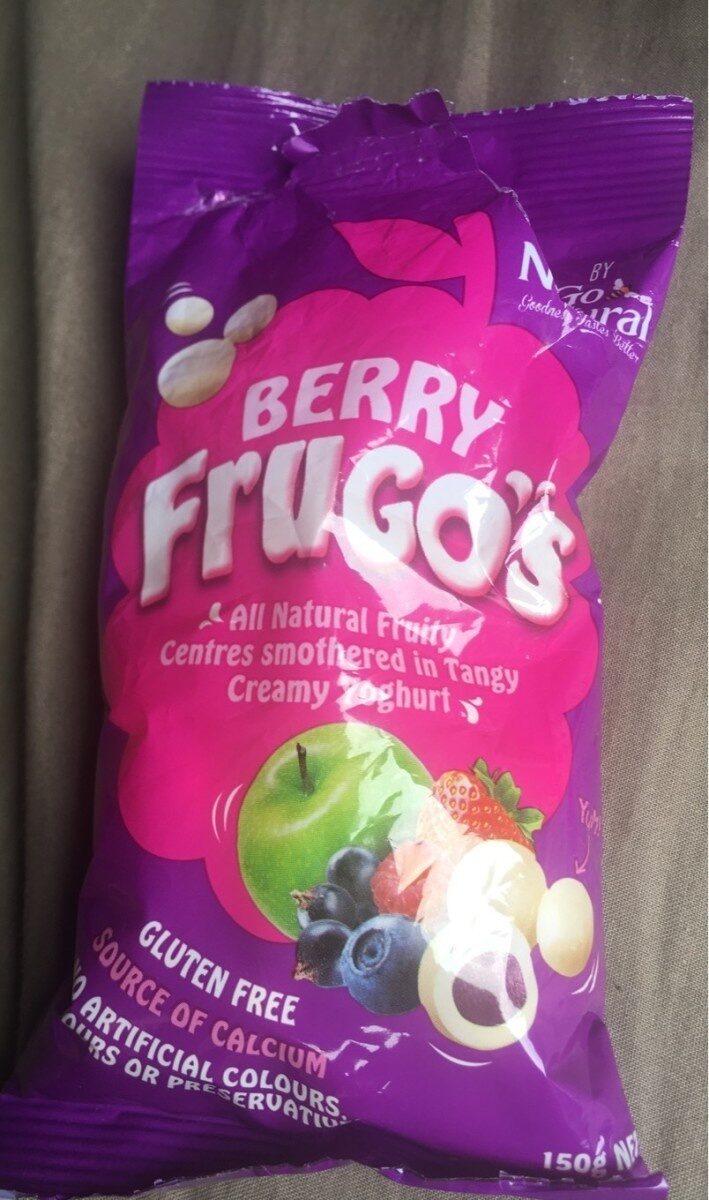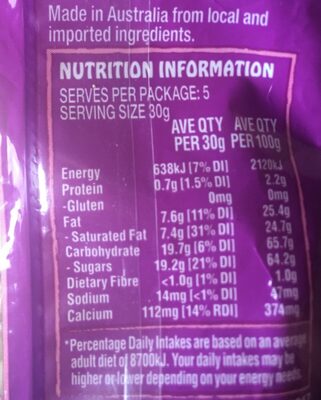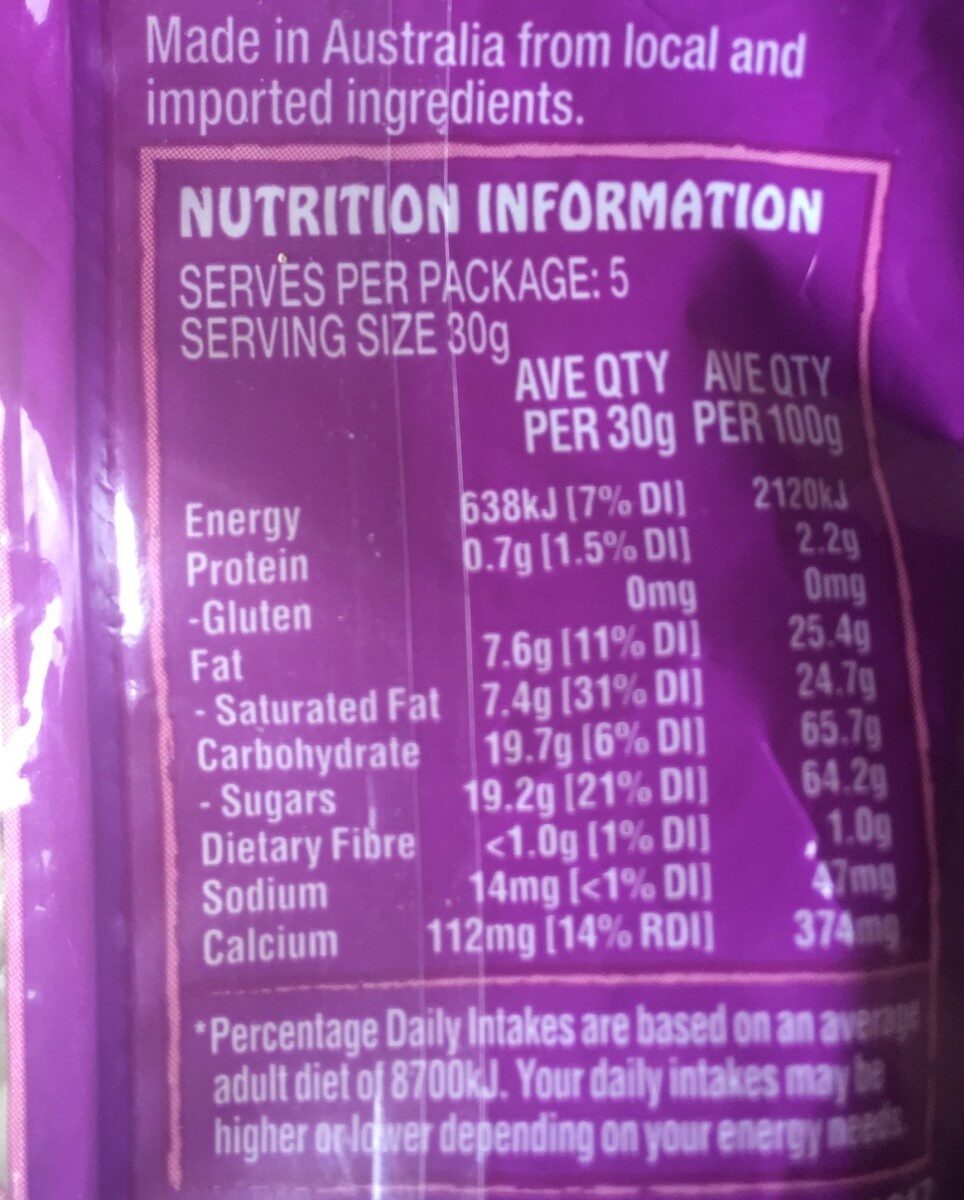Berry Frugo's - Go Natural
This product page is not complete. You can help to complete it by editing it and adding more data from the photos we have, or by taking more photos using the app for Android or iPhone/iPad. Thank you!
×
Barcode: 9310846050932 (EAN / EAN-13)
Brands: Go Natural
Labels, certifications, awards: No gluten, Kosher, No artificial flavors, No artificial preservatives, Australian made, Calcium source, No artificial colors, No artificial colours or flavours
Stores: Woolworths
Matching with your preferences
Environment
Packaging
Transportation
Report a problem
Data sources
Product added on by kiliweb
Last edit of product page on by cirno.
Product page also edited by archanox, inf, openfoodfacts-contributors, roboto-app, yuka.UmFvWURJNER2dVV3c1BZZzJRaUo0dU56bkllUGYwR1FCN1VXSWc9PQ, yuka.sY2b0xO6T85zoF3NwEKvlhd7bd7lp2j2JQTTwG2l2_KADpb3UM5D-7fBDKs.
If the data is incomplete or incorrect, you can complete or correct it by editing this page.








